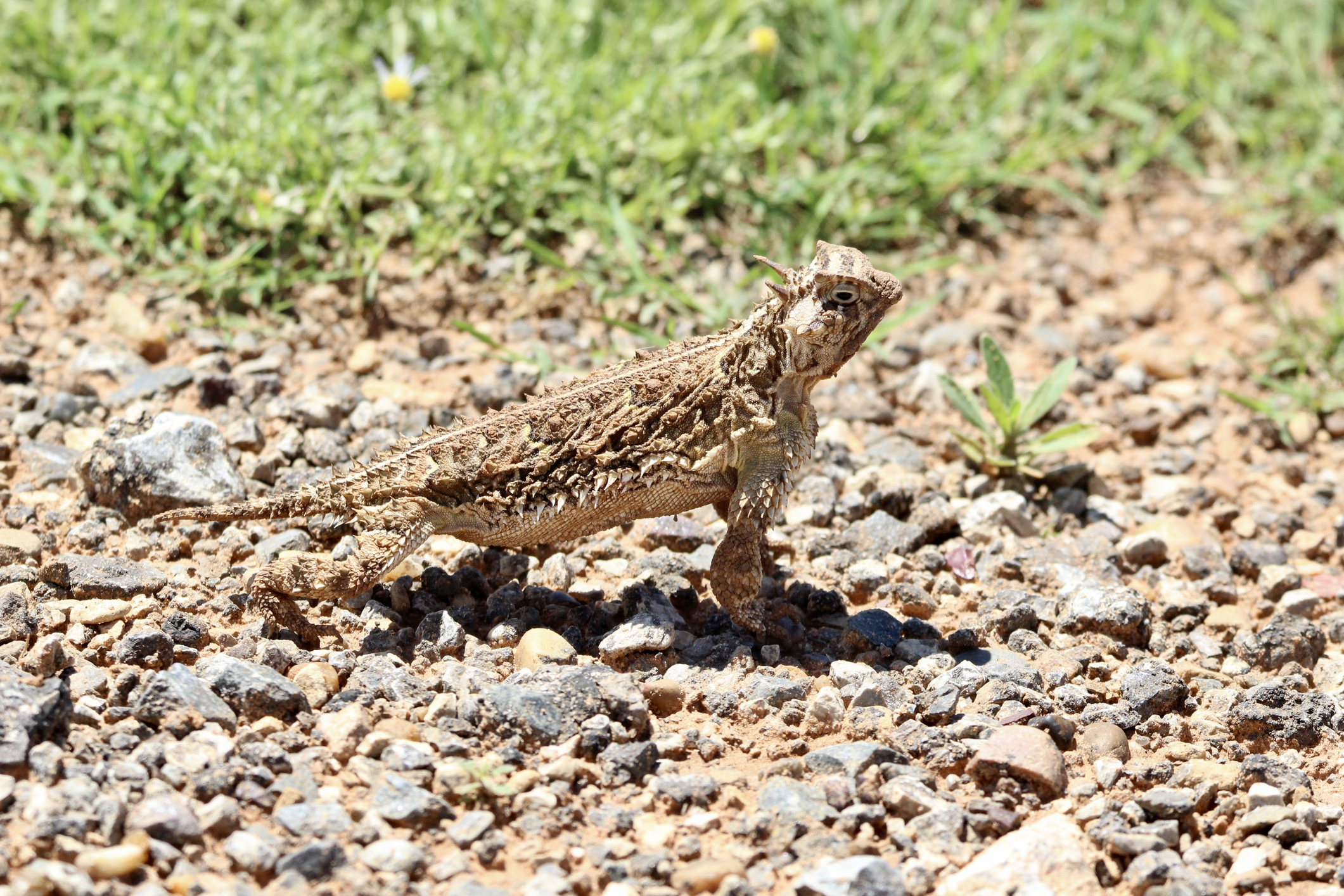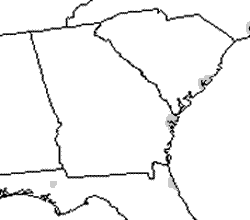Texas Horned Lizard (Phrynosoma cornutum) – Introduced


Photos by iStock used under license unless otherwise noted
Description: 2.5 – 4 in (6.5 – 10 cm). Horned lizards or “horny toads” are small lizards with bodies so flattened that they are almost circular in shape. True to their name, horned lizards also have a row of enlarged scales around their head that resemble horns. Generally brownish or sandy in coloration, horned lizards often have darker spots or mottling that helps them to blend into their environment.
Range and Habitat: Texas horned lizards occur naturally range from Louisiana to Arizona, but were once commonly sold as pets and have been introduced in several locations in the Southeast. Most established populations in South Carolina and Georgia are near the coast where sand dunes mimic their natural desert habitat.
Habits: Horned lizards are always found on the ground are fond of hot, sandy habitats. They often sit close to anthills and pick off each ant as it walks by. Horned lizards are masters of camouflage, generally relying on their coloration for protection and sometimes even partially burying themselves in sand. If their camouflage fails, horned lizards have a final defense; they can squirt droplets of blood from their eyes, potentially confusing a predator and allowing them to escape.
Prey: Horned lizards prey almost exclusively on ants but may eat other small insects.
Reproduction: Although the reproduction of this species in our area is unknown, females in western populations generally lay 14 -37 eggs in the spring.
Abundance: Only a few established populations of this species are known in the southeast. These populations are small and very isolated.
Notes: Although several breeding populations of this species are known, they do not seem to be spreading and it seems unlikely that this species will become invasive.
